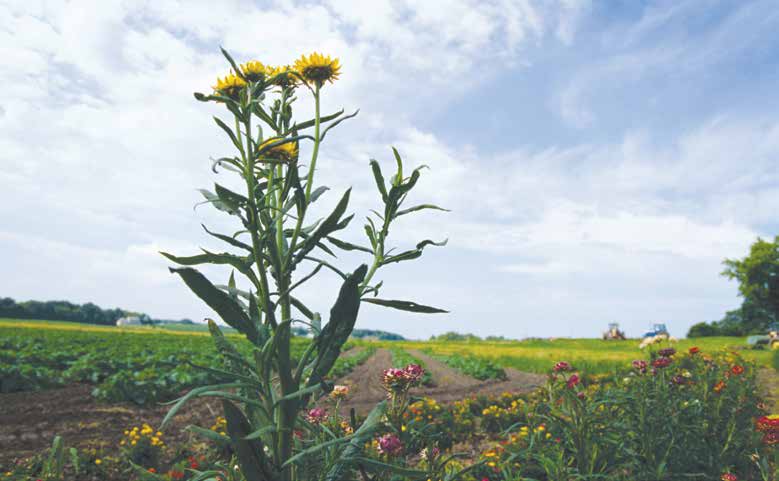introduCtion
Are low nutrient status; poor water-holding capacity;
environmental consequences and long-term impacts are
soil compaction; susceptibility to erosion; and disease,
not internalized into the economic equation. It could
nematode, or insect damage really individual and
then be argued that matters will not improve unless the
unrelated problems? Perhaps they are better viewed as
economic incentives are changed. We argue that those
symptoms of a deeper, underlying problem. The ability
economic motivations are already present, that sustain-
to tell the difference between what is the underlying
able soil management is profitable, and that such man-
problem and what is only a symptom of a problem is
agement will cause profitability to increase with greater
essential to deciding on the best course of action. For
scarcity of resources and higher prices of crop inputs.
example, if you are hitting your head against a wall and
This book has four parts. Part 1 provides background
you get a headache—is the problem the headache and
information about soil health and organic matter: what it
aspirin the best remedy? Clearly, the real problem is
is, why it is so important, the importance of soil organisms,
your behavior, not the headache, and the best solution is
and why some soils are of higher quality than others.
to stop banging your head against the wall!
Part 2 includes discussions of soil physical properties, soil
water storage, and nutrient cycles and flows. Part 3 deals
What many people think are
with the ecological principles behind—and practices that
individual problems may just be symptoms of a
promote—building healthy soil. It begins with chapters
that place a lot of emphasis on promoting organic matter
degraded, poor-quality soil.
buildup and maintenance. Following practices that build
What many people think are individual problems
and maintain organic matter may be the key to soil fertility
may just be symptoms of a degraded, poor-quality soil.
and may help solve many problems. Practices for enhanc-
These symptoms are usually directly related to deple-
ing soil quality include the use of animal manures and
tion of soil organic matter, lack of a thriving and diverse
cover crops; good residue management; appropriate selec-
population of soil organisms, and compaction caused
tion of rotation crops; use of composts; reduced tillage;
by use of heavy field equipment. Farmers have been
minimizing soil compaction and enhancing aeration; better
encouraged to react to individual symptoms instead of
nutrient and amendment management; good irrigation
focusing their attention on general soil health manage-
and drainage; and adopting specific conservation practices
ment. A new approach is needed to help develop farming
for erosion control. Part 4 discusses how you can evaluate
practices that take advantage of the inherent strengths
soil health and combine soil-building management strate-
of natural systems. In this way, we can prevent the many
gies that actually work on the farm, and how to tell whether
symptoms of unhealthy soils from developing, instead
the health of your soils is improving.
of reacting after they develop. If we are to work together
with nature, instead of attempting to overwhelm and
SOURcES
dominate it, the buildup and maintenance of good levels
Hills, J.L., C.H. Jones, and C. Cutler. 1908. Soil deterioration and
soil humus. In Vermont Agricultural Experiment Station Bulle-
of organic matter in our soils are as critical as manage-
tin 135, pp. 142–177. Burlington: University of Vermont, College
ment of physical conditions, pH, and nutrient levels.
of Agriculture.
A skeptic might argue that the challenges described
Montgomery, D. 2007. Dirt: The Erosion of Civilizations. Berkeley:
University of California Press.
above are simply the result of basic economic forces,
Tegmeier, E.M., and M.D. Duffy. 2004. External costs of agricul-
including the long-run inexpensive cost of fossil fuel and
tural production in the United States. International Journal of
crop inputs (although this is changing), and the fact that
Agricultural Sustainability 2: 1–20.
xiv
Building SoilS for Better CropS: SuStainaBle Soil ManageMent





